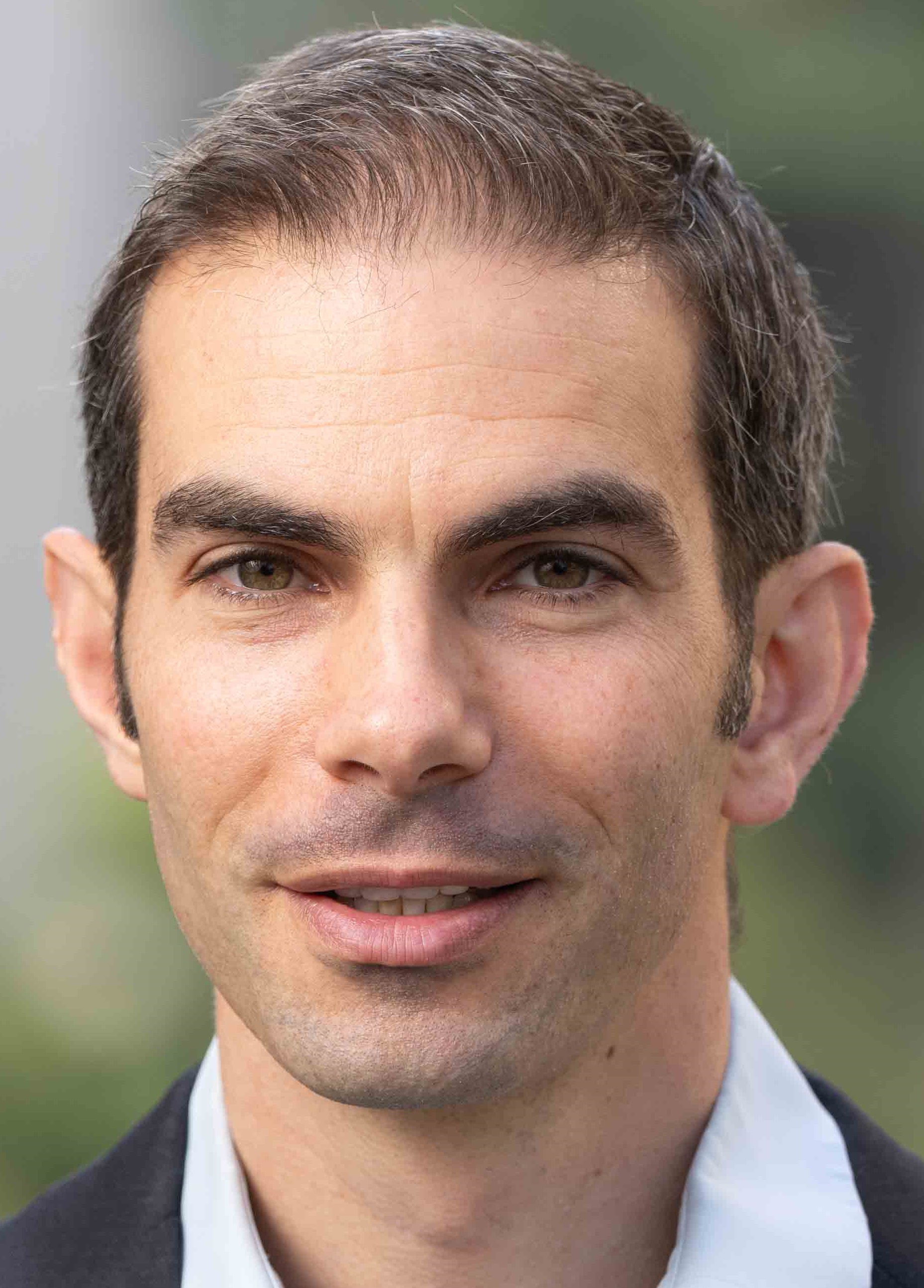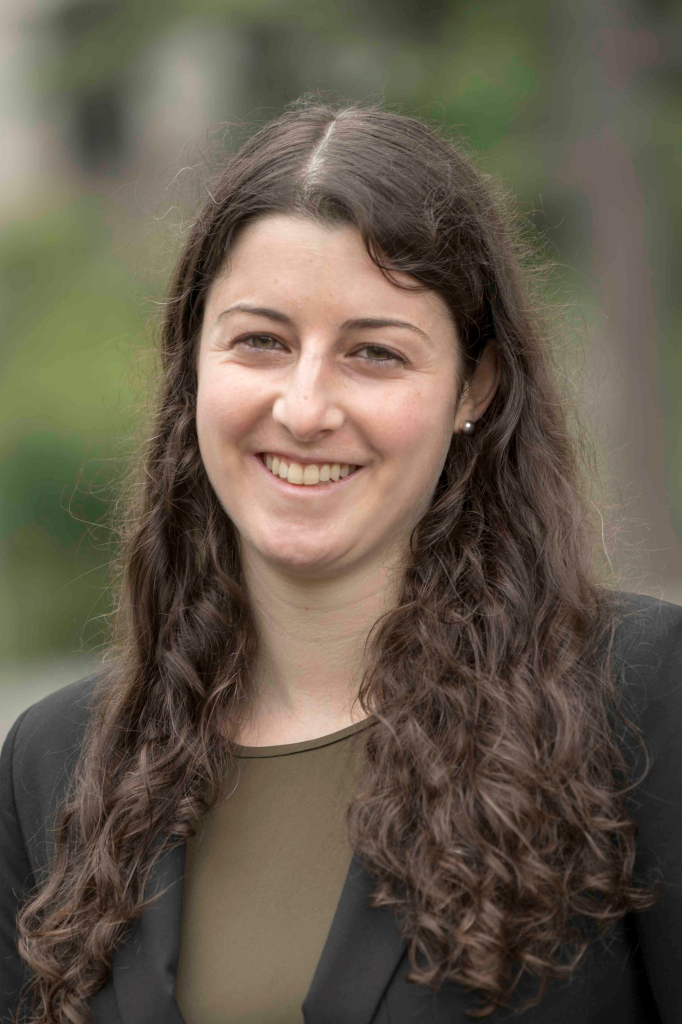ERE student work-in-progress presentations begin at 12:10PM. Most student presentations conclude at 1pm (see schedule to be sure). Post-doc presentations begin at 12:10PM and conclude at 1pm. Practice job talks and EEE visiting faculty seminars run 12:10-1:30PM. This seminar will be in-person only unless specifically requested by the presenter. Due to budget constraints, no food will be provided – please bring lunch with you!
Seminar Description
Faculty (EEE) seminars will meet on a few Wednesdays each semester; student (ERE) presentations will take place on the weeks that there is no EEE seminar (schedule below). All energy/environment/resources faculty and grad students are encouraged to attend both seminars!
The ERE faculty strongly encourage students and post-docs in the field to present on a regular basis. In practice, this means that students should present at least once a year starting in their third year. For post-docs, there are often slots open early in the semester, so feel free to indicate your preference for early Fall.
While the student seminar is meant for “work-in-progress”, the faculty’s hope and expectation is that students will prepare/refine their presentation as much as possible in advance. Students are encouraged to meet with faculty/students/visitors well in advance to vet ideas and gather preliminary feedback. The faculty also ask that students share slides with their advisor at least one week prior to the scheduled talk in order to get some more targeted feedback, prior to the presentation.
ARE Seminar Norms
EEE Faculty seminar website
Google Doc version of the schedule
Add the ERE Google Calendar
Upcoming Presentations – Spring 2024
8 May 2024

Presenter 1: Paula Meloni (PhD Student, ARE)
Title: Green Subsidies: unintended effects on accidents, injuries and welfare
Abstract: In an effort to curb greenhouse gas emissions stemming from the transportation sector, countries such as Sweden have implemented aggressive subsidies and tax schemes aimed at bolstering demand for EVs, hybrids and small ICEs while dissuading purchases of dirtier vehicles. While this approach targets significant externalities arising from CO2 emissions, it fails to account for the external costs of vehicle weight. This project aims to study the effects of these subsidies and road taxes on serious injuries, mortality and welfare through their impact on vehicle choice in Sweden. To that end, we plan on estimating a discrete choice model as in Grieco, Murry, Pinske, et al. (2022) using Swedish administrative microdata for 2016-2020. We also intend to build a set of counterfactuals to explore policy alternatives such as weight taxes.

Presenter 2: Zac Pond (PhD Student, ARE)
Title: Welfare effects of climate change on outdoor recreation: Evidence from campground reservations and cancellations
Abstract: Outdoor recreation comprises a large and growing sector of the economy. Consumer valuation of recreational activities, however, varies largely based on realized weather conditions. As such, the welfare generated from outdoor recreation will be directly affected by a changing climate. In this paper, we utilize rich data on campground reservations and cancellations combined with exogenous shocks in realized weather conditions to obtain revealed preference estimates of consumer valuation on realized weather. Consumer preferences exhibit an inverted-U shape relationship with temperature, with the disutility of extreme cold largely outweighing the disutility of extreme heat. We then combine our preference estimates with climate projections and a structural model of adaptation through recreation site substitution to estimate the welfare effects of climate change on outdoor recreation. We find that the welfare gains from decreased number of cold days more than offset the welfare losses from increased number of hot days, yielding a net increase in welfare.
Past Presentations – Spring 2024
21 February 2024

Presenter: Waldemar Marz (Post-doctoral Scholar)
Title: Fuel Economy Standards and Public Transport
Abstract: We identify and examine a novel welfare channel of fuel economy standards in a monocentric city model. A stricter emission standard for cars decreases the marginal cost of driving and triggers a shift in modal choice from public to private transport and a rise in carbon emissions in the medium run. In the long run, the modal shift additionally exacerbates the increase in the average commute length that results from lower driving costs. The resulting welfare cost for a 50 percent emission reduction goal turns out 7 percent higher than in a scenario without public transport. An alternative fuel tax policy, by contrast, induces a modal shift towards public transport and reduces the average commute and the welfare cost of emission reductions. The numerical model is calibrated with U.S. data.
6 March 2024

Presenter 1: Kendra Marcoux (PhD Student, ARE)
Title: Incomplete Environmental Regulation and Inter-sectoral Leakage: Evidence from the Petrochemicals Industry
Abstract: The bulk of U.S. climate policy focuses on incentivizing renewable energy to decrease domestic reliance on fossil fuels and in turn reduce emissions. While this approach attempts to decrease demand for fossil fuel based energy, it fails to account for a second major fossil fuel based product: plastics. This project leverages the long-term price shock to natural gas induced by the shale gas boom to construct a structural model of the trade-offs between natural gas based energy and plastic production. Using the calibrated parameters of this model, the project will then run a series of counterfactual simulations to predict how a fall in the natural gas price resulting from renewable energy subsidies might impact the production of plastics in the future compared to a scenario in which a carbon tax regulates both goods.

Presenter 2: Davide Castellani (Visiting PhD Student)
Title: The long-run effects of cyclones on the US housing market
Abstract: This study investigates the impact of tropical cyclones on the U.S. housing market from 1988 to 2021, utilizing a novel dataset. Employing HURDAT2 data from the National Hurricane Center and a radial hurricane winds model, the analysis build a new measure of wind speed and offer the first insight on the overall impact of all recordings cyclones at the county-yearly level. Through inverse probability weights and a local projection model, coastal counties with similar cyclone occurrence probabilities are compared, mitigating confounding effects. Findings reveal a significant 9% decline in the housing market over a 12-year period in counties affected by new cyclones, with nuanced short-term effects favoring supply-side dynamics. Empirical evidence suggests that this housing market decline may be attributed to perceived risks, particularly an increased number of flooding insurance purchases post-cyclones. Intriguingly, the study indicates that the effects are not driven by employment or income factors, as these aspects seem to exhibit positive trends in the aftermath of cyclones. In summary, this research provides important insights into how tropical cyclones affect the U.S. housing market, highlighting the need for more investigation to fully understand the reasons behind these impacts.
13 March 2024

Presenter 1: Abdoulaye Cisse (PhD Student, ARE)
Title: The Value of Improved Electricity Reliability for Firms and Households: Evidence from Senegal
Abstract: Electricity reliability is a major issue for firms and households in low-income countries. This project studies the value of persistent and large improvements in electricity reliability for consumers in Senegal. First, we exploit the staggered roll-out of a large-scale reliability improvement project and use rich disaggregated data on outages and consumers’ appliances and economic activities. We study the long-term impact of outages on appliance adoption, electricity use, migration in/out neighbors, consumption and firm outcomes. Using these reduced-form estimates, we plan to develop a demand model to estimate consumer welfare associated with reliability for different groups of consumers and to shed light on the distributional impacts of reliability in contexts with low baseline electricity reliability.

Presenter 2: Simon Greenhill (PhD Student, ARE)
Title: What are the health costs of noise pollution?
Abstract: Environmental noise pollution is ubiquitous yet has received little attention from economists. Correlational and lab studies suggest links between environmental noise exposure and adverse health effects ranging from sleep disruption to hypertension, heart disease, and increased suicide risk. A central challenge to studying noise pollution is a lack of data on ambient noise. I develop a new dataset measuring environmental noise using observations from seismic monitors. Leveraging high-frequency variation in noise from electric rail lines in California, I then estimate the causal effect of noise on infant health. Preliminary results suggest that electric train noise increases the risk of infant prematurity and low birth weight, with similar magnitudes to prior estimates of the impact of air pollution on infant health.
20 March 2024 (EEE Faculty Seminar)
Presenter : Will Rafey (UCLA)
Title: Conservation Priorities and Environmental Offsets: Markets for Florida Wetlands
3 April 2024

Presenter 1: Sayantan ”Sunny” Mitra (PhD Student, ARE)
Title: The Forest-Development Tradeoff: How are Local Populations Impacted When Infrastructure Replaces Forests in India?
Abstract: There is often a debate regarding the optimal trajectory for the developing country governments to take: preserve critical environmental resources or invest in infrastructure and industrial projects to spur economic growth. While the literature provides a significant body of evidence to show the deleterious effect of infrastructure on forests in developing economies, significant identification challenges have not allowed economists to evaluate accurately how deforestation for infrastructure affects the surrounding population and local economy. Using novel data on approvals of deforestation by the Indian government and household-level panel data, I aim to identify the local economic effects of deforestation for infrastructure with an emphasis on the distributional effects of such projects.
Presenter 2: Suvy Qin (PhD Student, ARE)
Title: Local Spillovers from Managed Retreat: Evidence from US Flood Buyouts
Abstract: Flooding is one of the most common and costly natural hazard risks. One way to adapt to flood risk is to relocate away from risky areas through managed retreat, implemented as flood buyout programs. By enabling government agencies to purchase and demolish flood-prone properties, buyout programs can permanently reduce flood risks. This project studies the indirect effects of buyouts on surrounding neighborhoods and the long-run outcomes of buyout households. I combine linked survey and administrative data with buyout location data from public information requests to provide causal estimates of how buyout programs affect both neighborhood characteristics and household outcomes.
10 April 2024

Presenter 1: Elif Tasar (PhD Student, ARE)
Title: Housing Tenure Stickiness and Access to Opportunity
Abstract: Capping the rate of increase in assessed property values is a common form of property tax relief intended to insure homeowners against demand shocks. By design, these “assessment caps” implicitly subsidize tenure and tax moving. I examine the incidence and spatial mobility effects of tenure-based subsidies to the user cost of housing. To do this, I build a longitudinal panel of housing and occupant characteristics for the near-universe of adults in California from 2010 to 2022 using federal tax returns, proprietary real estate, and Decennial Census data. Next, I use recent policy changes to America’s oldest and most binding assessment cap, California’s “Prop 13,” to study the spatial lock-in effects of rewarding tenure. In future work, I will provide direct evidence on how these lock-in effects influence neighborhood composition and develop a spatial equilibrium model to estimate misallocation resulting from tenure stickiness.
Presenter 2: Arthur Wardle (PhD Student, ARE)
Title: Model Estimation using Categorical Satellite Data with Misclassification
Abstract: Remotely sensed data products are gaining popularity in applied economics, but present novel challenges caused by non-classical measurement error. Research on debiasing model estimation with misclassified categorical outcomes has so far imposed strong functional restrictions on the misclassification process. We show that misclassification is a serious problem in modern remote sensed crop choice datasets covering California. We then introduce a method of debiasing parameter estimates in models estimated using that data using multiply imputed hot decking, and demonstrate its efficacy in simulations. We (will) conclude by demonstrating the technique in a crop choice model for the Pajaro Valley.
24 April 2024

Presenter 1: Shuo Yu (PhD Student, ARE)
Title: Payments for Ecosystem Services and Water Quality in the Midwest U.S.
Abstract:
Agriculture is a primary contributor to nonpoint source pollution. Cover cropping, a conservative practice extensively incentivized by payment for ecosystem services (PES) schemes such as the USDA’s Environmental Quality Incentives Program (EQIP), could effectively reduce runoff and sediment loss from fields, albeit its impact on soluble nitrogen levels and pest populations remains debated. This paper evaluates the social value of PES, focusing specifically on the effects of EQIP on water quality through cover cropping in the Midwest U.S. Utilizing a dataset that integrates georeferenced data on machine-learning-predicted cover crop adoption, water quality, water flow direction, land use, and climatic factors, I assess the effectiveness of cover cropping in reducing water pollution with panel data regressions. The results show significant reductions in nitrogen and phosphorus levels due to cover cropping, with effectiveness influenced by precipitation. Future analyses will explore EQIP’s effects on adoption rates and the economic and health implications of reduced nitrogen and phosphorus pollution. Combining these three parts of estimates will enable me to determine the cost-effectiveness of EQIP.

Presenter 2: Takanao Tanaka (PhD Student, ARE)
Title: The Effects of Environmental Regulations on Marginal Cost and Prices: Evidence from Japan’s Air Pollution Prevention Act
Abstract:
This paper provides comprehensive evidence on how externality-corrective policies alter marginal cost and prices, parameters dictating the welfare of producers and consumers in the output markets, in the context of air pollution regulation. We provide a simple framework that links the change in marginal costs and prices and producer and consumer surplus in multi-industries. Using Japan’s Air Pollution Prevention Act, newly digitized data on the universe of manufacturing products, and DDD estimators, we quantify the welfare costs attributable to environmental regulations. We compare our estimate with previous findings about the cost of pollution regulations and discuss the policy implications. (This is a proposal; we obtained no results)
1 May 2024
Presenter 1: Ian Hardman (PhD Student, ARE)
Title: Modeling Competition in the Global Coal and Gas Market
Abstract: A spatial equilibrium model of the world coal and gas market is developed that accounts for coal to natural gas switching, liquefaction and regasifiction constraints, potential for monopsony power, and the impacts of sanctions against key participants in the market. The market equilibrium is computed as the solution to a nonlinear complementarity problem. Where possible, parameters of the model are estimated econometrically or taken from observed data and the literature. Where this is not possible, the parameters are calibrated to observed global market outcomes in 2019 including production quantities and bilateral trade flows.

Presenter 2: Hamza Husain (PhD Student, ARE)
Title: The Economic Impacts of Precision Production
Abstract: Our paper provides a theoretical framework through which to analyze the economic impact of “agricultural precision technologies”, or technologies that are capable of adjusting input application to spatial or temporal variability within a firm. We aim to fill a void in the theory on the economics of precision application systems, deriving resource allocation under both traditional and precision technologies and providing a general theory that identifies under which conditions these technologies will be adopted by profit-maximizing firms. We also intend to apply the model empirically using remotely-sensed agricultural yield data from the Corn Belt to assess which farms could profitability adopt variable-rate fertilizer technology.
Past Presentations – Fall 2023
August 23 2023

Presenter: Devin Mounts (Oregon State University PhD Student)
Title: Canceled: An Incentive for Reliability in Texas’ Electricity Market
Abstract: U.S climate policy is increasing the retirement rate of fossil fuel generators, requiring large quantities of capacity to enter U.S electricity markets in order to maintain reliability. Texas implemented a new producer incentive subsidy, paid for directly by consumers, to increase reliable capacity growth in 2014. We examine the effect of this policy on reliability within ERCOT in three ways: a theoretical examination of its impact to firm profits, an empirical analysis of its effect on entry of generating capacity, and an empirical analysis of its effect on entry into the applicant pool. All three approaches suggest that the consumer paid subsidy did not improve reliability in the market.
August 30 2023 (EEE Faculty Seminar)

Presenter: Meredith Fowlie (ARE Faculty, Energy Institute at Haas, NBER)
Title: How Are Insurance Markets Adapting to Climate Change? Risk Selection and Regulation in the Market for Homeowners Insurance
Abstract: In the face of escalating climate risk, property insurance markets have a critical role to play in helping households and firms reduce risk exposures and recover from natural disasters when they strike. Performing these functions efficiently requires a detailed understanding of property-level disaster risk and pricing that accurately reflects the costs of insuring this risk. We use proprietary data on parcel-level wildfire risk, together with insurers’ regulatory rate filings, to investigate how insurance is being priced and provided in California’s homeowners’ insurance market. We document significant differences between the risk pricing we observe in this market and benchmark measures of ‘fair’ pricing. We also find striking variation across firms in terms of both risk pricing and underwriting. A selection model of natural hazard insurance that incorporates both price regulation and asymmetries in information across insurers helps rationalize these findings. Our results highlight the underappreciated importance of the winner’s curse as a barrier to participation in insurance markets for large, hard-to-model risks.
September 06 2023

Presenter: Joel Ferguson (UC Berkeley Post Doc)
Title: Climate Change and Civil Conflict in General Equilibrium
Abstract: There is a large body of empirical evidence suggesting that weather shocks causally affect the risk of civil conflict in low-income settings. If one of the channels for this effect is through economic shocks, as is widely hypothesized, then distant weather shocks may also affect conflict incidence via the trade network. I test this hypothesis in a sample of 2125 1°x1° grid cells over the period 2000-2015 in continental sub-Saharan Africa. To do so, I develop a quantitative spatial equilibrium model with weather-induced productivity shocks, which allows me to aggregate distant weather shocks in a model-consistent way and derive a reduced-form specification linking aggregated weather shocks to conflict incidence via labor’s share of income. I find that a 10% decrease in real wage causes a 6.4% increase in conflict incidence. I then use this model-consistent reduced form estimate to predict conflict under climate change and compare the results to those using simple reduced form estimates of the effects of weather shocks on conflict. These counterfactual results suggest that naive regressions of the effects of weather substantially underpredict increases in civil conflict incidence due to climate changeover the period 2015-2040.
September 20 2023 - Job Talk
![]()
Presenter: Jesse Buchsbaum (UC Berkeley grad, Postdoc at U of Chicago’s Energy & Environment Lab)
Title: How do consumers respond to prices in the long run? Evidence from electricity customers
Abstract: Long-run elasticities are critical inputs for welfare analysis, demand forecasting, and policy evaluation. But there is a dearth of empirical long-run elasticity estimates, leading much of the literature to use short-run estimates in their place. In this paper, I leverage a novel source of exogenous and persistent price variation to estimate the long-run price elasticity of demand for residential electricity consumers. In this setting, consumers are much more responsive to prices in the long run than in the short-run, with elasticity estimates of -2.4 and -0.36 respectively. I explore mechanisms and find that in the long run, consumers respond differently to temperature across price regimes. Furthermore, low-income consumers are particularly responsive to prices in the long run, emphasizing the importance of bill salience for low-income households. These findings highlight the importance of setting electricity prices that reflect social marginal costs, and suggest that retail electricity prices can play an important role in inducing conservation.
October 04 2023 - Job Talk

Presenter: Leila Safavi (UC Berkeley PhD Candiate, ARE)
Title: Can Firms Evade Pricing Regulation? The Case of Vertically Integrated Energy Utilities
Abstract:
Economic theory shows that vertical mergers may be used by a regulated monopoly subject to cost-based price regulation to evade regulation. When regulators allow increases in input costs to be passed onto customers, a regulated monopolist that is vertically integrated with an input supplier can earn profits by inflating input costs. I document evidence of regulatory evasion by US electric and natural gas utilities through their purchase of interstate natural gas pipeline capacity. Using a novel data set of vertical relationships between regulated utilities and natural gas pipelines, I show incentives for evasion are widespread in this industry: of US households with gas heating, 53% purchase gas from a utility that is affiliated with a natural gas pipeline. Next, I test whether utilities evade pricing regulation by signing transportation contracts with their pipeline affiliates for capacity in excess of consumer demand for gas. Pipelines nodes under contract with utility affiliates are underutilized by 19.5 percentage points on average, even during days where congestion rents are large, suggesting that regulatory evasion may contribute to overbuilding of the pipeline network. Lastly, I do not find statistically significant evidence that utility affiliates pay higher contract prices on average or face price discrimination by pipelines, but estimate that markups on transportation prices are $3 dollars higher for firms with incentives for regulatory evasion. I develop a simple model of regulatory oversight that shows how asymmetric information can rationalize the limited impact of regulatory evasion on input prices. I estimate that incentives for regulatory evasion have shifted $6.7 billion in excessive input costs onto ratepayers between 2010-2020.
October 11 2023

Presenter 1: Riccardo Norbiato
Title: Production Fragmentation, Trade and Emissions
Abstract:
Between 1990 and 2008, emissions embodied in the production of traded goods increased and many developed countries became net importers of pollution emissions. At the same time, these countries experienced a decrease in domestic emissions despite a substantial increase in output. Technological changes leading to lower pollution intensity (e.g., the amount of domestic emissions per unit of output) are usually reported to be the main cause of this emissions reduction. However, the standard decomposition analysis lacks considering the possible role played by production fragmentation and trade in intermediates: while not altering the composition of final goods produced, offshoring intermediates may lead to a decrease in firms’ pollution intensity through two channels. On the one hand, lower input prices associated with larger sourcing capabilities may affect firms’ abatement investment decisions. On the other, the physical production of several components can be offshored by implying composition effects related to intermediates. Thus, I develop a model linking trade with the environment to better understand the economic forces driving these changes. In particular, the model includes heterogeneous firms sourcing intermediates and it accommodates decreasing pollution intensities as a result of both endogenous abatement investment and offshoring decisions. By doing so, the aim is to analyze the effects of trade and environmental regulation on domestic and global pollution emissions. In future work, I plan to estimate the model and quantitatively evaluate a range of counterfactuals in order to explain the evolution of pollution emissions.

Presenter 2: Jules Linden
Title: Decomposing the distributional impact of carbon taxation across six EU countries
Abstract:
This paper decomposes and compares the distributional impact of national carbon taxes across six EU countries. We quantify the contribution of the key determinants of the carbon tax burden to its impact on inequality and regressivity indicators. We identify large cross-country differences in carbon tax burdens, their composition, and the drivers of the within-country distributional impact. A carbon tax is regressive in all countries, but carbon tax burdens and their impact on income inequality are larger in poorer countries of our sample. Cross-country differences in the primary driver of carbon tax regressivity suggest that the most effective policy lever to mitigate carbon tax regressivity differs across countries. Differences in the composition of the consumption basket play an important role in most countries, but not all. Differences in savings rates play the most important role in the wealthier countries of our sample. Differences in the carbon intensity of consumption plays a larger role in the poorer countries of our sample. Overall, this article suggests that differences in the structure of carbon tax incidence and the drivers of its distributional impact across countries pose a challenge to cross-country policy learning, and highlights the need for in-depth country-level and comparative analysis.
October 18 2023
Presenter: Matteo Benetton (Haas)
Title: Does Climate Change Adaptation Matter? Evidence from the City on the Water
Abstract:
This paper exploits the operation of a sea wall built to protect the city of Venice from increasingly high tides to provide evidence on the capitalization of public infrastructure investment in climate change adaptation into housing values. Properties above the sea wall activation threshold experience a permanent reduction in flood risk and expected damages, which are reflected in higher prices. Using a difference-in-differences hedonic design we show that the sea wall led to a 3% increase in the value of the residential housing stock in Venice, which is a lower bound on the total welfare gains generated by the infrastructure.
October 25 2023 (EEE Faculty Seminar)

Presenter: Ulrich Wagner
Title: Measuring the Health Effects of Implicit Air Pollution Trades on the European Carbon Market
Abstract:
Market-based climate policies decentralize abatement decisions by establishing a CO2 price, either via taxes or via a pollution permit market. Since CO2 emissions are often released jointly with conventional air pollutants, CO2 permit trades give rise to implicit trades of such co-pollutants. In contrast to CO2 emissions, co-pollution emissions are not traded on a ton-for-ton basis, and they have local environmental impacts. Depending on the spatial distribution of polluters and the polluted, these properties can lead to undesirable health outcomes. We develop an empirical framework for quantifying changes in plant-level air pollution emissions due to carbon permit trades on the European Union Emissions Trading Scheme (EU ETS). Linking predictions of this framework to a purpose-built chemical transport model (Gu et al., 2023a, 2023b), we estimate the associated effects on ambient concentrations of PM2.5 and ozone in Europe on a 0.25° by 0.3125° grid. We apply this framework to provide first estimates of the health consequences of co-pollution trades on the European carbon market. We find that health co-benefits during the first decade of the EU ETS were substantially larger than under a counterfactual command-and-control regulation.
November 01 2023
Presenter: Waldemar Marz
Title: Economic Forces Drive Climate Policy Polarization
Abstract:
Climate policy is among the most polarizing issues in US party politics. That polarization is a relatively new phenomenon. I develop a model that explains polarization based on underlying economic trends. Rising income inequality and political campaign contributions, as well as rising incomes, bring parties’ economic policies closer together. That pushes parties to try to distinguish themselves by increasingly focusing on non-economic value politics. The analysis also shows a potential path forward: framing climate primarily as an economic policy issue that puts distributional implications (and remedies) front and center and a stricter regulation of campaign contributions.
November 08 2023
Presenter: Vincent Thivierge
Title: Do environmental markets improve allocative efficiency? Evidence from U.S. air pollution
Abstract:
Across many domains, market-based interventions hold the promise of reducing costs through improved allocative efficiency in settings where prices are otherwise missing. This claim is also fundamentally challenging to verify: the very absence of prices before a market makes establishing misallocation changes due to the market difficult. This paper develops an empirical framework showing how a theoretical change in allocative efficiency following a policy change can be recovered using a quasi-experimental panel data estimator, without needing input prices. We apply this framework, together with administrative data, to the study of two major U.S. markets for air pollution, a canonical missing market setting where concerns over high abatement costs have made market-based interventions particularly appealing. We find that for California’s RECLAIM program, allocative efficiency improved by 10 percentage points. For the U.S.’s NOx Budget Program (NBP), we do not detect efficiency gains. Heterogeneity analyses suggest the plant and firm-level flexibility in pollution abatement options, and the regulator’s time commitment to the policy matter for the efficiency gains of pollution markets.
November 15 2023
Presenter: Lucy Hackett
Title: Subsidence and Adaptation: Evidence from Mexico City
Abstract:
How does city structure respond to slow-moving environmental hazards? This paper explores this question in the context of subsidence, a slow-moving environmental hazard consisting of the gradual sinking of buildings due to aquifer over-extraction, in a large developing-country city. Subsidence is a prevalent and worsening phenomenon worldwide, considered in the civil engineering literature to be a major risk to infrastructure in affected urban areas. I estimate the causal effect of subsidence on the economic geography of Mexico City, an urban context experiencing severe sinking using spatial regression discontinuity and fixed effects approaches. I find that subsidence causes deterioration of urban spaces, and results in significant shifts in population and housing density out of unstable areas. Despite these movements and decreases in the floorspace built in sinking areas, the price of new construction is unresponsive to subsidence, potentially reflecting large discount rates for future damages. In future work, I will use confidential microdata to explore the effect of subsidence on used housing prices and housing repair costs. I will also propose an economic geography model that will allow me to back out the welfare impacts of these findings and compare counterfactual policy scenarios where costly mitigation efforts are implemented to prevent sinking.
November 29 2023
Presenter 1: Dingyi Li
Title: The Price to Avoid Pollution: Evidence from Travel Mode Choice in Beijing
Abstract:
Using fine-scale travel survey data in Beijing, we propose an estimate of the short-term marginal willingness-to-pay (WTP) to avoid air pollution. We develop a model to show the trade-offs between indoor and outdoor travel modes for compulsory work trips during high-polluted hours. Our model indicates that the short-term marginal WTP forms the lower bound for the long-term WTP, which is around 3.60 dollars per year to avoid 1 μg/m3 ambient fine particles (PM 2.5). Our estimation strategy uses a machine learning IV method in a high-dimensional econometrics setting. Our empirical results are robust to different time lengths, age groups, and income levels. We find that a longer potential exposure to air pollution prevents people from walking and cycling. People above 55, vulnerable to pollution, have 28% higher WTP than the young. Similarly, richer people with above 100,000 RMB annual incomes, who value their health the same as time, are willing to avoid a unit of pollution with 36% more cost. Finally, we find evidence for the information effect on behavioral adjustment: people start to reduce the negative effect of bad air only after the large media coverage of the pollution.
Presenter 2: Shuo Yu
Title: Impact of Cover Cropping on Water Quality
Abstract:
This study investigates the effects of cover cropping on water quality. We leveraged pixel-level cover crop adoption data with 30-meter resolution and harmonized water quality data for the Mississippi River Basin, along with climate data from ECMWF. The study aggregated cover crop adoption rates within a five-mile radius of each water monitoring site and executed a panel data regression to evaluate the influence on nitrogen and phosphorus levels in water, accounting for climatic variables. Initial results revealed no significant immediate effect on these nutrient levels. However, a significant reduction in nitrogen compounds was observed in sites with at least five years of water quality observations. Further research is planned to address potential sample selection issues and to explore the short-term and long-term benefits of cover cropping.
December 06 2023
Presenter 1: Trevor Woolley
Title: The Social Value of Farm Animal Welfare: Using a Voter Referendum to Reveal the Value of a Statistical Hen Life-year
Abstract:
Do animal welfare regulations go too far or not far enough? With the surge of animal welfare legislation over the last decade, and their pending implementation within the next five years, it is critical that we consider both their costs and benefits. However, uncertainty surrounding measurement of these benefits has hindered the analytical tractability of this question for two reasons. The first is that the number of farm animals in certain conditions (e.g. caged, cage-free, etc) is not publicly known at the state or national level. The second is that no empirical measure exists for the value of a statistical life-year for any farm animal. In this article, I overcome these challenges in the setting of California’s ban on battery cages (Proposition 2) and derive a lower bound of the social benefits of the policy. To overcome the first barrier, I use grocery scanner data to infer policy-induced changes in the number of hens living in caged and cage-free conditions based on eggs sold with and without a “cage-free” label. To overcome the second barrier (the value of population changes), I measure the policy-induced change in household consumer surplus and invoke the Median Voter Theorem to uncover a minimum estimate of the value of a statistical caged hen life-year from the perspective of California households under certain assumptions about voter rationality.
Presenter 2: Aaron Watt
Title: Optimal Siting of Air Quality Monitors
Abstract:
Federal air quality regulation relies on a network of monitoring stations for enforcement. The network is spatially sparse, making the location of each monitor important in determining who gets regulated. Current monitor siting rules provide local agencies with flexibility in determining the monitor location; however, local agencies have different incentives than the federal regulator. Little is known about the impact of delegating the choice of monitor placement to the local level. This paper examines the implications of differing incentives to monitor by modeling an alternative siting rule where the federal regulator chooses the monitor location directly. By incorporating an approximation of the local agency’s response to a new monitor, the federal regulator can choose a monitor location to maximize health outcomes.
December 13 2023
Presenter: Sebastian Tebbe
Title: Road Pricing with Multiple Policy Goals: The Effect on Vehicle Ownership, Driving, and Commuting
Abstract:
Many road pricing systems exempt or discount clean vehicles to achieve environmental objectives with transportation policies. Setting optimal road prices is not straightforward because the responses to the policy, such as vehicle acquisitions, driving on suburban roads, and residential sorting, interact nontrivially with the multiple policy goals. We provide a framework for setting optimal congestion charges that reflects emission and congestion externalities and accounts for these responses. Using Swedish administrative microdata, we identify these responses by exploiting a temporary exemption for alternative fuel vehicles and variation in individuals’ exposure to congestion charges based on whether an individual crossed one of Stockholm’s two exempted highways to travel to work. We find that exempting alternative fuel vehicles induced tolled commuters to reduce the adoption of fossil fuel vehicles and increase the adoption of alternative fuel vehicles, leaving the overall fleet size unchanged. However, increased driving in alternative fuel vehicles did not fully offset the reduction in trips from fossil fuel vehicles. Treated commuters were also more likely to move into the congestion zone, leading to shorter commuting distances. Finally, we combine the estimated responses with the framework to recover an optimal congestion charge of €9.46 per crossing.
Past Presentations – Spring 2023
22 February 2023

Presenter: Leila Safavi (ARE PhD Student)
Title: Energy Transition and Transportation Networks: Estimating the Economic Impact of Natural Gas Pipelines
Abstract: By allowing for the development of new major shale formations, innovations in hydraulic fracturing changed the spatial distribution of energy production in the United States. Did transportation networks efficiently expand in order to bring fracked gas to market? I develop a model of pipeline investment where frackers contract with pipeline operators to expand pipeline capacity between supply and demand areas and pipelines can exert market power over the price of capacity expansions. Testing predictions from the model with a novel dataset on pipeline contracts, I show that supply regions where pipelines have significant pre-existing market power under-invest in capacity expansions, leading to incomplete market integration. This finding highlights the importance of addressing market power in transportation infrastructure as the energy sector shifts towards renewable electricity.
1 March 2023

Presenter: Charles Taylor (ARE Post-Doc)
Title: Environmental Drivers of Agricultural Productivity Growth: CO2 Fertilization of US Field Crops
Abstract: Post-war growth in agricultural productivity outpaced the US non-farm economy, spurred by steadily increasing crop yields. We argue that rising atmospheric CO2 is responsible for a significant share of these yield gains. We present a novel methodology to estimate the CO2 fertilization effect using data from NASA’s Orbiting Carbon Observatory-2 (OCO-2) satellite. Our study complements the many field experiments by regressing county yields on local CO2 levels across the majority of US cropland under actual growing conditions. For identification, we utilize year-to-year anomalies from county-specific trends, an instrument for those CO2 anomalies using wind patterns, and a spatial first-differences approach. We consistently find a large CO2 fertilization effect: a 1 ppm increase in CO2 equates to a 0.4%, 0.6%, 1% yield increase for corn, soybeans, and wheat, respectively. In a thought exercise, we apply the CO2 fertilization effect we estimated in our sample from 2015-2021 backwards to 1940, and, assuming no other limiting factors, find that CO2 was the dominant driver of yield growth–with implications for estimates of future climate change damages.
8 March 2023

Marshall Burke, Stanford University
Faculty (EEE) seminars
Title: The Growing Risk and Burden of Wildfire Smoke
Abstract: We study the growing societal burden of wildfire smoke. Using a combination of remote sensing, machine learning, and causal inference, we quantify how exposure to wildfire-sourced particulate matter is changing across the contiguous US. We then use this information in a number of downstream tasks: we develop a new metric of wildfire severity related to population smoke exposures, we quantify the contribution of wildfire smoke to overall pollution trends, and we link smoke exposures to the universe of emergency department visits in CA to understand health impacts.
15 March 2023

Yunmi Kong, Rice University
Faculty (EEE) seminars
Title: Liquid Markets: An Empirical Analysis of a Water Exchange
Abstract: This paper empirically analyzes the performance of one of the world’s most developed water exchanges, which operates as a primitive limit order market. Upon modeling participants’ incentives to shade their order prices and their choice between limit and market orders, I identify the distribution of participants’ willingness to pay (or accept) from the observed orders and trades. The model flexibly allows for dynamics, risk aversion, and default behavior. Counterfactual simulations suggest the observed exchange attains substantially lower trade surplus than periodic uniform-price market clearing. The exchange exhibits noticeable price dispersion, which enables suboptimal buyer-seller matching and incentivizes price shading.
22 March 2023

Presenter: José-Luis Cruz (ARE Post-Doc)
Title: Global Warming and Labor Market Reallocation
Abstract: Global warming is a phenomenon expected to have heterogeneous effects across geographic locations and economic sectors. To assess its welfare consequences and the reallocation of workers across different markets, I develop a dynamic economic model with the patterns of structural transformation and spatially distinct labor markets facing varying exposure to warming damages on productivity. I incorporate trade of goods and migration across regions and industries, to account for the ability of agents to adapt to this phenomenon, and non-homothetic preferences, to reproduce the reallocation of economic activity when income grows. To measure workers’ mobility, I collect data from censuses and population surveys, and employ methodologies from the demographic literature to provide novel estimates of worldwide bilateral migration flows. To identify the non-linear effects of temperature on productivity, I exploit weather fluctuations in a long panel and find that agricultural productivity in the hottest countries declines by 6% when temperature rises 1ºC. The model, quantified for 6 sectors and 287 countries and subnational units, suggests that workers in agriculture face welfare losses three times larger than the average worker and that employment in this sector increases. Although hot regions might reduce the production of agricultural goods and import them from less affected locations, sectoral specialization is mainly driven by the shift in consumption expenditure towards the subsistence goods, as warming reduces global income.
5 April 2023 12:10-1pm

Presenter: Arthur Wardle (ARE PhD Student)
Title: Causally Identified Travel Cost Demand Shifts for Non-Market Valuation
Abstract: Travel cost demand models are widely used by both academics and practitioners for revealed preference valuation of recreational natural resources. Modern users typically estimate travel cost demand curves using discrete choice random utility models, which impose numerous structural assumptions with substantive influence over welfare estimates. This paper develops a method for estimating the consumer surplus change resulting from exogeneous changes in site attributes that is based on causally identified changes in zonal visitation. In contrast to discrete choice approaches, this method does not require specifying a choice set or observing all relevant site attributes. The method’s performance is compared to traditional discrete choice random utility model estimation in a series of simulations and demonstrated to substantially reduce bias when either a subset of attributes or elements of the choice set are unobserved.

Presenter: Elif Tasar (ARE PhD Student)
Title: Assessment Caps and Spatial Mobility
Abstract: Capping the rate of increase in assessed property values is a common form of property tax relief intended to insure homeowners against demand shocks. By design, these “assessment caps” implicitly subsidize tenure and tax moving. I examine the mobility effects of two prominent assessment caps in California and Texas using quasi-experimental variation in the value of the cap across properties. Using granular property assessment and residential history data, I aim to characterize the distribution of tax savings that these caps generate and the types of moves that they deter. I plan to use these reduced-form results in a spatial equilibrium model to estimate misallocation arising from the caps.
12 April 2023 12:10-1:30pm

Presenter: Kendra Marcoux (ARE PhD Student)
Title: Impacts of political representation on environmental justice measures
Abstract: Minority groups tend to be disproportionately exposed to environmental disamenities and various measures of environmental harm. This gap is thought of as attributable to three separate mechanisms: residential sorting, firm sorting, or discriminatory politics. Few studies have explored the role that discriminatory politics plays, despite the fact that decisions over where these same disamenities should be located are often impacted by state and local representatives. This paper explores how discrimination on behalf of elected officials might contribute to environmental inequality. I plan to use a close elections regression discontinuity design at the state legislature level to understand how electing minority legislators, or legislators from either major party, can impact environmental justice outcomes within their districts.

Presenter: Christoph Semken (Universitat Pompeu Fabra, Barcelona PhD Student)
Title: The Marginal Impact of Emission Reductions
Abstract: Many people think they can at most have a small impact on climate change through their own actions, limiting the demand for individual emission reductions. Currently available statistics are not suited to systematically assess this belief. In this paper, I derive the marginal impact of emission reductions – the effect of reducing emissions by 1tCO₂ – for tangible climate change outcomes, document important misperceptions and show how they affect behaviour. Using climate models, I estimate the marginal impact for glacier ice melting, life expectancy and vegetation change. Subjects’ beliefs are inconsistent with the climate model findings in several ways. First, they substantially underestimate the marginal impact. Second, they think the marginal impact increases when others reduce their emissions (strategic complementarity). By contrast, for most outcomes, climate models predict strategic substitutability. Third, they falsely believe there are discontinuities at known temperature thresholds, after which the marginal impact significantly decreases. Providing subjects with the climate model findings causally increases perceived self-efficacy, intentions to reduce emissions and real donations to mitigate them. The findings are consistent with a model of threshold thinking, which predicts positive overall reductions of information provision in equilibrium.

Presenter: Connor Jackson (ARE PhD Student)
Title: Additionality and Adverse Selection in Demand Response Programs
Abstract: Paying for reductions in consumption of externality-generating goods yields incentive problems, because counterfactual consumption is unknown to the regulator. Payments can be made for consumption reductions that are not additional—they would occur even in the absence of the payment. This additionality problem can inflate program costs and generate welfare losses that counteract benefits from reduced consumption. I will estimate the effects of this additionality problem on California’s Power Saver Rewards Program with a triple-difference design, estimating the average electricity consumption reduction from the program, and thus the average cost per kWh of additional demand reduction.
19 April 2023 12:10-1:30pm

Presenter: Simon Greenhill (ARE PhD Student)
Title: What are the costs of noise pollution? Evidence from seismic monitors
Abstract: Environmental noise pollution is ubiquitous yet has received little attention from economists. Evidence from correlational and lab studies in medicine and public health suggests links between environmental noise exposure and adverse health effects ranging from sleep disruption to hypertension, heart disease, and increased suicide risk. A central challenge to studying noise using quasi-experimental methods is the lack of data on ambient noise levels. I develop a new dataset of environmental noise using observations from seismic monitors, which have been shown to measure anthropogenic noise. I propose to use this dataset in combination with an instrumental variables identification strategy to study the causal effect of noise on health outcomes and property values.
Presenter: James Sayre (ARE PhD Student)
Title: Predicting Yields at Scale using Remote Sensing (with Joel Ferguson and Kangogo Sogomo)
Abstract: We develop a procedure to feasibly produce remotely sensed agricultural outcome measures (such as crop yields) using publicly available survey data and large scale satellite imagery. Our approach builds upon the methodology of You et al. (2017) to introduce a dimensionality reduction technique that allows us to train a convolutional neural network in a setting in which the training data are much more aggregated than the level of the satellite imagery, yet maintains the temporal and spatial features necessary for accurate crop discrimination. Additionally, we develop a methodological toolkit that can be used by other researchers to select, download, query, and run analyses on large scale sets of imagery where such images must be stored locally on computing clusters. The primary application of our procedure is to predict maize yields in Mexico, using high resolution satellite imagery obtained for all of the states in Mexico.

Presenter: Trevor Woolley (ARE PhD Student)
Title: What If All Farm Animals Were Pasture Raised? Estimating Consumer and Producer Costs
Abstract: In a given year, the US is home to 28 times as many farm animals as people (9.2 billion to 332 million in 2022). Over 95% of these animals are raised entirely indoors. Applying a mixed logit model to grocery purchases data, I (plan to) estimate consumer willingness to pay for free-range and pasture-raised poultry, pork, and beef products. Using my estimates of market shares and semi-elasticities, I (will) estimate the private marginal costs of these products and the consumer/producer welfare impacts of a hypothetical welfare standard that requires all broiler chickens, pigs, and beef cows in the US to be pasture-raised. This is very early stage research, so my presentation will focus nearly entirely on my proposed empirical strategy.
26 April 2023 12:10-1:30pm

Presenter: Hamza Husain (ARE PhD Student)
Title: A Bioeconomic Model of Green Manure Cover Crops and Soil Health Dynamics
Abstract: Depletion of soil fertility is considered to be one of the the major biophysical causes of low per capita food production in Sub-Saharan Africa. The neglect of the rural sector by governments and the collapse of traditional societies and their fallowing practices have resulted in the removal of large quantities of nutrients from soils without sufficient quantities of fertilizer or organic resources to replenish them. Green manure cover crops (GMCCs) are a neglected yet promising technology for land-constrained smallholders to quickly improve soil health while reducing the need for costly fertilizer inputs. I plan to develop an optimal control model that integrates GMMCs and dynamic processes of carbon and nitrogen turnover in soils within an economic optimization framework, using (hopefully) rich data from agronomic field studies to calibrate the model. The model will demonstrate gains that might be realized from the adoption of this low-cost technology.

Presenter: Sunny Mitra (ARE PhD Student)
Title: The Forest-Development Tradeoff: Local Socioeconomic Effects and the Role of Increasing Costs Related to Deforestation for Infrastructure in India
Abstract: In land-constrained developing countries, there is often an argument regarding the optimal trajectory for the governments in such countries to take: preserve critical environmental resources or invest in infrastructure to spur economic growth. Using an Indian government regulation on the cost of deforesting different ecological types, I aim to inform this debate by evaluating the local socioeconomic effect of replacing forest with infrastructure. In the process, I also hope to contribute to the debate about the role of increasing costs on reducing deforestation for infrastructure and thus discuss the prospects of payment for ecosystem services in this context.

Presenter: Milan Quentel (Visiting PhD Student)
Title: Gone with the Wind: Renewable Energy Infrastructure, Welfare and Redistribution
Abstract: Electricity production from renewable sources of energy is cheap and reduces CO2 emissions. Yet the global expansion of renewable energy infrastructure has been slow, in part because residents fear the effect of nearby infrastructure on the local quality of life, for example due to the visual impact or noise pollution, and delay construction. Focusing on wind energy in Germany, I estimate the welfare and redistributive effects of such infrastructure projects and the implications for optimal zoning and redistributive policies. I combine a novel identification strategy with fine spatial data to show that i) wind turbines decrease housing prices, ii) high-skilled residents move away, and iii) the local labor supply of high-skilled decreases. The results suggest that wind turbine locations become less attractive, especially so for high-skilled residents. To shed light on the welfare effects, I develop a quantitative spatial model of residential choices following turbine construction. I estimate the key parameter, the elasticity of amenities with respect to wind turbines, using the exogenous variation from the reduced form strategy. Finally, I use the model to evaluate how different zoning and redistributive policies affect the welfare costs of turbines, redistribution, and incentives for further turbine construction.
3 May 2023 12:10-1:30pm
Presenter: Aaron Watt (ARE PhD Student)
Title: Optimal Siting of Air Quality Monitors in Ambient Pollution Regulation
Abstract: Regulating air quality relies heavily on air pollution measurements taken by a sparse network of air quality monitoring stations. Due to this sparsity, there is high uncertainty in air quality between stations, making the location of the monitors important in deciding who gets regulated and who does not. This project builds a Bayesian model of optimal sequential monitor siting, explicitly including the regulator’s uncertainty in air quality and incorporating knowledge gained from previously placed monitors in future siting decisions. This model will then be taken to US data to estimate optimal sites for future monitors given different decision rules and regulatory frameworks.

Presenter: Lucy Hackett (ARE PhD Student)
Title: Subsidence and the costs of groundwater over-extraction: Evidence from Mexico City
Abstract: Subsidence, the sinking of land areas due to aquifer over-extraction, is a prevalent and worsening phenomenon worldwide that has major consequences in urban areas. This paper focuses on an urban context experiencing rapid and extreme land subsidence due to aquifer drawdown: Mexico City. Exploiting spatial variation in the geology of the historic lake bed on which the city was built combined with groundwater extraction rates as an instrument for neighborhood-level subsidence, I estimate the causal effect of subsidence on housing market outcomes, economic activity, and measures of infrastructure integrity. I interpret these estimates through the lens of a quantitative spatial model, and evaluate the welfare consequences of place-based policies that subsidize either in-situ adaptation to subsidence or subsidized development in less vulnerable areas.
Fall 2022
14 September 2022

Presenter: Wei Guo
Title: The Sharing Economy as a Disaster Remedy: The Case of Airbnb
Abstract: How to handle the logistics for short-term displacements remains a critical yet underexplored question in disaster relief. This paper explores the welfare impacts of the home-sharing platform Airbnb on disaster accommodation, in the context of wildfire evacuation near Los Angeles. I develop a structural model of short-term housing choice highlighting two welfare channels. First, the option of Airbnb accommodation has a peer effect that increases consumer surplus for all. Second, the altruistic sharing creates a transfer to customers who enjoy a lower-than-usual price. I find evacuees to Los Angeles obtain a welfare gain of $192k per day of evacuation from the Airbnb option, of which only $17.5k come from the altruistic sharing. Substantial benefits fall on regular travelers due to the failure of evacuee targeting. Only a subset of households in good social-economic status conducts altruistic sharing, while other hosts also suffer from a welfare loss due to the price spillovers. I suggest enabling customer targeting can correct the home-sharing accommodation as an equitable transfer from altruistic households to disaster evacuees.
21 September 2022

Presenter: Joe Shapiro, UC Berkeley
Title: Institutions, Comparative Advantage, and the Environment: Why are Developing Countries Polluted?
Abstract: I propose a new reason why developing countries have high levels of air and water pollution: financial, judicial, and labor market institutions provide comparative advantage in clean industries. Weak institutions make countries poor and polluted; strong institutions make countries rich and clean. Strong national institutions attract clean production, even conditional on environmental regulation and factor endowments. Cross-country differences in the composition of output between clean and dirty industries explain more of the global distribution of emissions than differences in the techniques used for production do. Partial equilibrium calculations and a quantitative general equilibrium model suggest that strengthening institutions in countries with weak baseline institutions would substantially decrease their pollution through relocating dirty industries abroad, though would correspondingly increase pollution in high income countries.
28 September 2022
Presenter: Bobby Harris
Title: Willingness to Pay for Electricity Reliability: Evidence from U.S. Generator Sales
Abstract: Power outages and unreliable electricity supply have potentially high economic costs; however, existing empirical evidence on the magnitude of these costs or the value of electricity reliability is limited. In this paper, I provide some of the first revealed preference estimates of household willingness to pay to avoid power outages (also referred to as residential value of lost load) using a defensive expenditures approach. Combining this approach with proprietary, store-transaction level sales data for all generators sold at Lowe’s Home Improvement stores from 2012-2020, I find that a household is willing to pay $1.16/kWh of avoided outage. Given this estimate, I perform various back-of-the-envelope evaluations of potential utility investments in improved reliability, the outage-related costs of hurricanes, and total household willingness to pay to avoid average annual outages, which I calculate to be over $1 billion per year.
5 October 2022

Presenter: Annika Stechemesser
Title: Temperature impacts on mobility in New York City: Evidence of unequal, compounding heat risks
Abstract: Adversary effects of heat stress have been identified across a range of disciplines. The usage of public transit can lead to increased heat stress through waiting times in the sun or in hot stations underground, lack or air-conditioning in trains, or passenger density. In New York City, subway stations frequently experience higher temperatures than above ground which can become particularly dangerous on hot days. In this study, we assess the temperature dependence of the mobility behavior in New York City using daily turnstile data for 439 subway stations from 2014 to 2019. A binned fixed-effects panel-regression model is applied to assess the general influence of temperature on subway usage in New York City. Preliminary results show a quasi-quadratic relationship between temperature and mobility with sharp near-linear decays in mobility for hot and cold temperatures. Isolating the warm response (>17°C) we perform separate linear regressions for neighborhoods (ZCTA level). The results show disparities across New York City. Relating these results to the New York City Heat Vulnerability Index which captures the geospatial distribution of heat risk in New York City based on a number of environment and socioeconomic indicators, we find that areas already at a higher risk experience smaller reductions in mobility. These results suggest that neighborhoods already at a socioeconomic disadvantage disproportionally bear the additional burden of heat stress caused by public transit and are limited in their ability to mitigate it.

Presenter: Hendrik Mahlkow
Title: The Carbon Footprint of Global Trade Imbalances
Abstract: A large share of global carbon emissions arises in the production of goods that are consumed in a different country and from burning fossil fuels that have been extracted yet elsewhere. The flows of carbon embodied in trade are highly asymmetrical, decoupling territorial emissions (or what we will call production footprints) from consumption footprints and from what we call extraction or supply footprints. At the same time, trade is highly and persistently unbalanced in value terms, too, allowing this decoupling to be even more pronounced — with a priori ambiguous environmental consequences. Prominently, the two countries with the largest net ex- and imports of carbon (China and the US) have at the same time consistently been among the countries with the largest trade surplus and deficit, respectively, and many large fossil fuel exporters have been running persistent trade surpluses. We investigate the effects of global value trade imbalances on carbon emissions around the world. To this end, we build a Ricardian quantitative trade model including sectoral input-output linkages, trade imbalances, fossil fuel extraction, and carbon emissions from fossil fuel combustion. For every individual country, the emission effect of removing its trade imbalance depends on the carbon intensities of its production and consumption patterns, as well as on its fossil resource abundance. The simultaneous removal of all global trade imbalances is found to lower world carbon emissions by 0.62 percent or 184 million tons of carbon dioxide. Out of all individual countries’ imbalances, eliminating the Qatari trade surplus and the US trade deficit would lead to the largest environmental benefits in terms of lower global emissions. [with Joschka Wanner]
12 October 2022 (EEE Faculty Seminar)

Robert Metcalfe, University of Southern California
Faculty (EEE) seminars
Title: Welfare and Congestion
Abstract: Sufficient statistics have proven to be a very useful tool for measuring welfare changes. Our paper extends this literature in three ways: First, we extend the theory for estimating the welfare impacts of price changes by including externalities that affect consumption decisions. Second, we apply the theory to an area of growing policy importance: congestion pricing. We develop estimates of peak and off-peak demand elasticities for urban mass transit in San Francisco using a large natural experiment and a natural field experiment that subsidized travel across 4.8 million trip sessions. Third, we estimate the welfare impacts for these subsidies using a sufficient statistics approach and a marginal value of public funds (MVPF) approach, and provide a way to connect these approaches. Our analysis suggests that off-peak subsidies can increase welfare, but the positive effects are reduced when consumers take the decisions of others into account compared to when they do not. We also find a large variation in the welfare impacts of shifting travel to different periods, which is explained by differences in demand and congestion characteristics. Finally, we show that the targeting of subsidies can increase welfare, but need not do so if the regulator does not have accurate information on demand.
19 October 2022

Presenter: Jenya Kahn-Lang
Title: Price Discrimination in Residential Electricity Markets
Abstract: This paper studies determinants of pricing heterogeneity in an unconcentrated market for a nearly homogeneous good. In doing so, I uncover some adverse efficiency and distributional impacts of enabling competition when consumers face large search frictions. Price competition for residential electricity supply results in substantial price dispersion, with low-income households and marginalized communities paying systematically higher electricity prices than their higher-income counterparts. I show theoretically that these patterns are consistent with a model in which firms price discriminate on search frictions and compete through marketing that raises equilibrium costs. Auxiliary analyses largely rule out alternative explanations. I estimate a structural model that shows that price discrimination in the Baltimore electricity supply market leads to an annual welfare loss of 12% of total industry variable costs. The primary cause of price differences across low- and high-income communities is geographic variation in marketing. This variation is driven by geographic differences in marketing costs and, to a lesser extent, differences in willingness to sign up with a marketer. However, eliminating marketing increases prices faced by low-income communities in the short run due to an interaction between marketing and price discrimination on inattention-driven inertia. The main results leverage billing data from Baltimore Gas and Electric, but I confirm several pricing patterns in other U.S. retail electricity markets.
26 October 2022

Presenter: Sherrie Wang
Title: Planetary-Scale Digital Agriculture via Remote Sensing
Abstract: As the world works toward the UN Sustainable Development Goals, data gaps hinder our ability to measure progress and target interventions. Meanwhile, rapid advances in computer vision and satellite imagery give us the opportunity to extract knowledge about the Earth at planetary scale. Compared to field surveys, which are the traditional source of knowledge about human activities and natural ecosystems, satellites offer global coverage at low marginal cost. However, in order for us to realize the potential of satellite imagery, we must overcome a lack of ground labels, especially in the world’s poorest regions. This talk will cover strategies for mapping agriculture from satellite imagery when ground labels are scarce. In particular, I discuss how (1) transfer learning and weak supervision enable country-wide crop field delineation in India and (2) meta-learning allows for adaptive land cover classification in new regions with few labels. I conclude with an example of how satellite image-based datasets can be used to estimate causal effects by showing the impact of wildfire smoke on crop yields in the US Midwest.
2 November 2022 (EEE Faculty Seminar)

Panle Jia Barwick, Cornell University
Faculty (EEE) seminars
Title: Attribute-based Subsidies and Market Power: an Application to Electric Vehicles
Abstract: Attribute-based subsidies are commonly used to promote the diffusion of energy-efficient products in industries with significant market power. We first develop a theoretical framework for optimal policy design that incorporates endogenous product attributes, environmental externalities, and market power. We then estimate an equilibrium model with endogenous product attributes using comprehensive data on China’s vehicle market. Simulations show that relative to attribute-based subsidies, uniform subsidies favor small and environmental-friendly vehicles but exacerbate the quantity distortion from market power for high-quality products. In contrast, subsidies based on the driving range and battery capacity or vehicle weight generate a large consumer surplus by improving product quality and mitigating market power. Among commonly used policies, capacity-based subsidies induce attributes valued by consumers, mitigate market power, and lead to the largest welfare gain at a moderate loss of environmental benefit. These findings highlight the importance of incorporating product-attribute choices and market power considerations in designing attributes-based policies.
9 November 2022

Presenter: Sara Johns
Title: Tax credit structure and wind farm investment decisions
Abstract: Policymakers face many choices about subsidy design, including forward-looking decisions about how long a subsidy should last and how it should be phased out. This paper analyzes how the lifespan and phaseout of production tax credits for wind energy affects wind farms’ investment decisions. Wind farms receive a production tax credit for their first ten years, but can requalify for additional tax credits by making investments to retrofit or replace parts of the wind turbines. I show descriptively that wind farms choose to retrofit shortly after ten years, and this is earlier than in places without a ten year policy. I also show that wind farms increased retrofits just before a planned phaseout of the tax credits in 2017. I then use this temporal variation in the value of the production tax credit as well as technology costs to estimate a dynamic single-agent optimal replacement model. I then examine wind farm investment under counterfactual tax credit lifespans and phaseouts.
16 November 2022 (EEE Faculty Seminar)

Marshall Burke, Stanford University
Faculty (EEE) seminars
30 November 2022
Presenter: TBD
Title: TBA
Abstract: TBA

Presenter: Nicklas Nordfors
Title: TBA
Abstract: TBA
7 December 2022

Presenter: Charles Taylor
Title: TBA
Abstract: TBA
Spring 2020
27 January 2021

Presenter: Pierre Biscaye
Title: Electricity subsidy programs in practice: Evidence from COVID-19 relief in Ghana
Abstract: During economic downturns, governments often provide transfers to protect some of their poorest constituents. These often take the form of in-kind transfers and subsidies government programs to distribute food, water, or electricity at low or no cost have been widespread during the 2020 global health crisis. We survey 1,200 households in Accra, Ghana who were eligible for an electricity subsidy program introduced in response to the COVID-19 crisis to assess the efficiency, distributional, and political implications of the program and identify opportunities for increasing the efficacy of government transfer programs. First, most households report valuing the subsidy only slightly less (and often more) than the equivalent amount in cash, presumably because the subsidized electricity is inframarginal to their optimal consumption. Providing relief through the existing electricity payments system also allowed some households to benefit quickly, but did not preclude delays in subsidy receipt or exclusion of certain recipients. Second, we identify regressivity in subsidy distribution, beyond the regressivity of providing greater subsidy amounts to households using more electricity. Households that pay a landlord for electricity and that share an electricity meter with other users both common setups for low-income electricity consumers in urban settings in the developing world are significantly less likely to have ever received the subsidy. Finally, we show that subsidy receipt increases support for the governing party but that respondents sour on the subsidies substantially when reminded that they might have to pay for them in the future.

Presenter: Joel Ferguson
Title: Sustainable Agriculture, Residue Burning, and Urban Infant Mortality: Evidence from Mexico
Abstract: Agricultural fires in developing countries produce substantial amounts of particulate matter and contribute to urban air pollution. However, relatively little research has evaluated policies intended to reduce crop residue burning compared to other air pollution abatement strategies. We quantify the effects of a portfolio of extension programs promoting sustainable agriculture practices to almost 250,000 plots throughout Mexico on agricultural burning and infant mortality in urban localities. Using event study regressions, we show that the roll-out of extension services to 0.1° x 0.1° grid-cells was unanticipated and led to reductions in the number of agricultural fires. Subsequently, we find that at the mean area serviced by extension in 2019, localities have 20% fewer agricultural fires within 50 Km and 15% fewer infant deaths relative to the mean. Reductions in infant mortality are experienced year round, rather than concentrated in the agricultural burning season, and are completely driven by the amount of area upwind that receives extension. We estimate the programs’ cost of delaying an infant death by a month to be about $3000, suggesting that promotion of sustainable agriculture can be a cost-effective policy for reducing air pollution-induced infant mortality.
10 February 2021

Presenter: Derek Wolfson
Title: Who Gets a Bid? Racial Disparities in Price Quotes
Abstract: When services are customized and priced on a case-by-case basis, sellers possess considerable leeway in whether to serve a customer and how much to charge if they do. These types of markets are ubiquitous–including, among others, construction contracting, auto repair, and legal services. Compared to firms with posted menus or fixed prices, firms offering customized services have more potential to discriminate based on customer characteristics. Inherent in these settings is the possibility of discrimination with respect to racial or ethnic characteristics. Our research will investigate racial disparities in pricing and welfare for an expensive, durable investment—rooftop solar photovoltaic (PV) systems.
24 February 2021

Presenter: Jesse Buchsbaum
Title: Spillovers from Ancillary Services to Wholesale Power Markets: Implications for Climate Policy
Abstract: In electricity markets, generators are rewarded both for providing energy and for enabling grid reliability. The two functions are compensated in separate markets: energy markets and ancillary services markets. We provide evidence of changes in the fuel mix in the energy market that is driven by exogenous changes in an ancillary services market. We provide quasi-experimental evidence and a theoretical framework for understanding the mechanism, showing that it results from the multi-product nature of conventional power plants combined with discontinuities in costs. As a result, policy changes relating to grid operations, grid reliability, or climate change could have unintended effects.

Presenter: Jaecheol Lee
Title: A Cost-Benefit Analysis of Warnings: the Case of South Korean Air Pollution Alert System
Abstract: Concerns over air pollution have been increasing due to anthropogenic emissions and natural disasters such as wildfires and dust storms. To reduce adverse health effects, an increasing number of countries have enacted air quality alert systems. However, it is unclear whether the resulting health benefits outweigh the costs associated with reduced economic activities and system maintenance. This project conducts a cost-benefit analysis of air pollution warnings focusing on the case of South Korea. Based on a regression discontinuity design, it estimates the reduction in respiratory morbidity spending using South Korea’s universal healthcare data. This work further identifies the decrease in consumer demand utilizing the daily credit card spending dataset. Our results show that the health benefits considerably exceed the costs, which suggests the importance of the transparent and timely distribution of pollution information.
10 March 2021

Presenter: Matthew Tarduno
Title: What drives support for inefficient corrective policies? Evidence from a Nevada ballot initiative
Abstract: I use an information provision experiment conducted around a vote on Nevada’s renewable portfolio standard (RPS) to study voter preferences for externality-correcting policies. I leverage exogenous variation in respondent beliefs induced by the experiment to model policy support as a function of voter perceptions of policy attributes (cost, effectiveness, and regressivity). I find that voting behavior is relatively unresponsive to perceived cost and perceived regressivity, but relatively responsive to perceived policy effectiveness. Using this model, I decompose differences in support for a performance-based policy (Nevada’s RPS) and a hypothetical price-based policy (a carbon tax). Oaxaca-Blinder decompositions imply that differences in perceptions of policy attributes explain just 23% of the gap in support between RPS policies and carbon taxes, suggesting a significant role for “tax aversion.” To the extent that misperceptions of policy attributes do explain differences in support for these two policies, the explained gap results from overly optimistic beliefs about RPS attributes. To conclude, I predict voting behavior several under counterfactual scenarios. I find that in this setting, targeting revenue toward “swing” voters is unlikely to significantly improve support for carbon taxes. Instead, the results of this experiment highlight the importance of communicating to voters the efficacy of price-based policies.

Presenter: Eva Lyubich
Title: Place Based Climate Policy
Abstract: There is immense geographic heterogeneity in household carbon footprints across the US. This paper aims to understand whether this is the result of place-based constraints, such as under-provision of local public goods, and if so, what the implications are for optimal climate policy. I leverage migration across places to estimate what fraction of spatial heterogeneity is driven by preferences and sorting, and what fraction is driven by places themselves. I then use the relationship between place characteristics and emissions to identify potential opportunities for targeted, place-based investments and estimate the cost of achieving given carbon reductions under different policy scenarios.
7 April 2021

Presenter: Leila Safavi
Title: From Bargaining Power to Market Power: Evidence from Natural Gas Pipelines
Abstract: Do changes in bargaining power of large firms contribute to increased market concentration and markups? This research project will try to determine if growing imbalances in bargaining power between firms in vertical markets have empirically contributed to rising markups using data from the US natural gas industry. Using data from 2004-2020 on bargained rates between natural gas shippers and pipelines, I estimate a structural model of the natural gas industry to measure annual mark-ups and bargaining power parameters for each pipeline-shipper pair. I estimate the extent to which variation in bargaining power explains rising markups. Finally, I explore the determinants of bargaining power using policy generated changes in regulatory stringency and market structure.
21 April 2021

Presenter: James Sears
Title: Culpable Consumption: Public Shame and Excessive Water Use
Abstract: Consumer response to conservation policy is a key parameter of interest for public water utilities. Utility districts around the country face difficult decisions during droughts and must find ways to incentivize consumer conservation behavior in order to meet state-imposed reductions (Weiser and Siders 2015). In California, policy design is further complicated by legal obstacles to traditional pricing instruments.This complexity, combined with recent improvements to our understanding of behavioral influences like social norms, peer effects, and nudges, has sparked policymaker interest in nontraditional policy instruments for evoking conservation behavior, especially among price-inelastic consumers. Using household-level consumption data for single family homes in the San Francisco East Bay Area, I investigate how residential customers changed their consumption behavior around the recent drought emergency and responded to policy-induced variation in both prices and social pressure. After discussing broader patterns in water consumption, I estimate water demand models for single-family homes and characterize heterogeneity in price-responsiveness across income and usage levels. Next, I incorporate data on public shame exposure induced by the EBMUD Excessive Use Penalty from 2015-2016 to estimate the extent to which public shame exposure induced additional conservation behavior beyond that elicited by drought surcharges.

Presenter: Wenjun Wang
Title: Measuring Economic Value of Patents Using Stock Market Response
Abstract: I develop three measures of patent value based on stock market response, including a publication-event measure, a grant-event measure, and a non-event-Tuesdays measure. These measures each assign a dollar value to each patent of public firms and make it possible to compare patent values across different fields and years. Empirical results show that the three measures often assign similar dollar values to a focal patent, suggesting the value measures are consistent with each other and thus can be pretty accurate. I use the estimated values to investigate which factors are most useful in predicting patent values before grant. I find that the number of independent claims at the time of publication plays the most important role. The number of dependent claims, numbers of pre-grant forward and backward citations also matter. Finally, I explore if the commonly used patent quality measures: number of forward citations and patent renewals are good proxies of patent values. Primitive empirical findings suggest forward citations and patent renewals are only loosely correlated with the economic value of patents and can only explain a small proportion of the latter.
5 May 2021

Presenter: Jenya Kahn-Lang
Title: Discriminating on Inattention: Equity and Efficiency Implications in Retail Electricity Markets
Abstract: We observe large price dispersion in many subscription markets. Using data from the Connecticut residential electricity market, I show that price dispersion is greater among existing customers than among new customers. I show that existing price dispersion theories cannot explain this fact and propose a new theory to explain price dispersion in subscription markets: discrimination on attention. I show that the data are consistent with key predictions of this theory. I present a model to test whether price discrimination on attention can rationalize the prices we observe. I also explore equity-driven rationales for policy intervention. I find evidence that this market creates transfers from low-income households to high-income households and from immigrants, Black, Hispanic, and mixed race households to white, non-Hispanic households. I propose using the new model to test which of three theories can explain the differences in prices between demographic groups: differences in attention, proposensity to switch suppliers, and bargaining outcomes. I discuss using the model to test equilibrium outcomes under counterfactual policies.

Presenter: Wei Guo
Title: Distributional Effect on Migration and Welfare of Amenity: Evidence of Air Pollution
Abstract: Quantifying the sorting impact of amenity is complicated by the interdependence between neighborhood demographics and endogenous amenities. This paper will assess the GE effect of environmental amenities on heterogeneous migration, inequality and gentrification under the endogeneity of amenity, using variations in air pollution driven by wildfire smoke. I first document four stylized facts regarding inequality, endogenous amenities, wildfire smokes and air pollution. I next develop a model of dynamic residential choice with households holding heterogeneous preferences over endogenous and exogenous amenities. I will estimate the model using a novel microdata that links demographic information to the universe of housing transactions in the US.
Past Presentations – Fall 2020
23 September 2020 (Practice Job Talk, 12PM-1:30PM)

Presenter: Ariel Zucker
Title: Can price discrimination incentivize behavioral change? Evidence from a randomized field experiment
Abstract: Incentives for health behaviors are an increasingly important policy tool in both developed and developing countries, and there is widespread interest in improving the effectiveness of incentive contracts. However, people are different, and no one contract is most effective for everyone. The theory of price discrimination offers two promising strategies to effectively customize contracts: tagging on observables (i.e., 3rd-degree price discrimination), and offering a menu of contract choices (i.e., 2nd-degree price discrimination). We adapt each of these strategies to customize incentive contracts for walking. Using a randomized controlled trial among more than 5,000 adults in urban India, we show that both mechanisms increase physical activity, leading to a 60% increase in steps walked relative to the effect of a one-size-fits-all benchmark contract. Moreover, we find that a common force in health behavior settings - commitment motives - helps both mechanisms to sort agents into more effective contracts. In particular, time inconsistent agents demand contracts that commit their future selves to walk more, bringing their preferences in partial alignment with the principal and improving self-selection. Finally, we find limited evidence that lack of information about health behavior costs is a barrier to effective price discrimination. The results suggest that customization mechanisms have broad promise in preventive health settings.
30 September 2020

Presenter: Hannah Druckenmiller
Title: The economic and social value of forests: Evidence from tree mortality in the American West
Abstract: Humans rely on healthy forests to provide numerous economic, social, and environmental benefits, yet these ecosystems have become increasingly vulnerable to widespread mortality events. This paper exploits a natural experiment to assess the welfare consequences of changes in forest health in the American West. Using plausibly random changes in tree mortality generated by the specific temperature requirements of pests, I find that forest die-off has significant and economically meaningful impacts on both the market value of forests and the non-market amenity and environmental quality benefits these ecosystems provide. I estimate that over the last two decades, tree mortality in American West has decreased the value of timberland by $744 million, decreased home values by $299 million, and increased damages from air pollution, wildfire, and flooding by more than $40 million per year. These empirically-grounded estimates can assist decision-makers in trading off the costs and benefits of investments in forest health.
7 October 2020 (Practice Job Talk, 12PM-1:30PM)

Presenter: Scott Kaplan
Title: Entertainment Utility from Suspense, Surprise, and Starpower
Abstract: This paper uses revealed preference methods to explore and quantify demand for non-instrumental information in entertainment, examining the “thrill” associated with the trajectory of an event, and the “skill” associated with information-conveying agents. Relying on the theory presented in Ely et al. (2015, JPE), I produce an empirically testable conceptual framework that examines the effect of suspense and surprise on consumer attention, incorporating spectator preferences for starpower of the information-conveying agents. I use game-specific, high-temporal frequency secondary ticket marketplace and television ratings data from the National Basketball Association (NBA) to measure spectator responses to suspense, surprise, and starpower. I find that suspense and starpower each enhance willingness-to-pay (WTP) and willingness-to-watch (WTW) between 4-30% depending on specification, while surprise induces a smaller viewership response. Interestingly, I find a negative interactive effect between suspense and starpower, suggesting that heightened suspense leads to differentially higher viewership with lower starpower on the court. These findings have important implications for entertainment companies, including leagues and television broadcasters, and advertisers.
14 October 2020 (Practice Job Talk, 11:30AM-1PM)

Presenter: Benjamin Krause
Title: Balancing the Purse and the Peace: Public Goods, Tax Collection, Social Norms and Political Protest
Abstract: State formation requires increasing tax revenue while maintaining political stability. In this paper, to help understand how the state establishes a social norm of tax compliance and to identify how those efforts affect both revenue collection and protest participation, I conduct the first randomized controlled trial of public goods and tax collection - and I do so in a weak and politically volatile state with very low tax compliance. I do this in partnership with the national tax authority and the local government of one of the largest cities in Haiti. I cross-randomize for multiple years and at-scale across the entire city, the only public good provided broadly by the government, trash removal, as well as of the principal means of tax collection for the local government, hand-delivering property tax invoices. To identify mechanisms, I further randomize the framing of the invoices through various ‘nudges’ including a novel treatment to measure the effect of social norms, and I also collect a representative panel of survey data. Lastly, I introduce two novel metrics of political participation: measuring political speech by mapping all of the graffiti in the city, and measuring violent or destructive political unrest by monitoring the construction of barricades during protests. I find that quite contrary to the existing literature from more established states, attempting to collect taxes in a setting of initial state formation actually decreases tax compliance across a broad set of metrics. I also provide the first evidence of tax collection increasing political protest participation. However, I find evidence that providing public goods has the opposite effects: increasing tax payments on both the intensive and extensive margin while decreasing political protesting. Analysis of mechanisms and interactions indicate that social exposure of tax compliance in conjunction with public goods provide a pathway for peacefully establishing a social norm of tax compliance.
21 October 2020 (12PM-1:30PM)

Presenter: Peiley Lau
Title: The Extraordinary and Unexplained rise of unreported gas flaring among fracking firms
Abstract: This paper evaluates the effect of an environmental policy aimed at reducing routine natural gas flaring and provides causal evidence of misreporting by unconventional oil and gas wells in the Bakken Shale. I overcome the challenge of relying on self-reported administrative data by constructing a novel monthly well level dataset to evaluate flaring and policy compliance between March 2012 - November 2019 in the Bakken. I employ a difference-in-differences estimation specification using North Dakota and Montana wells to evaluate the causal impact of a North Dakota flaring reduction policy on reported and true flaring in North Dakota. I find evidence that the policy reduced well level flaring by 6.7 (5.2 - 7.1) points in the remotely detected data, and by 6.1 (5.3 - 6.6) points in the self-reported data between October 2014 - October 2016, relative to flaring rates in the pre-policy period. However, I find evidence of misreporting November 2016 onward; I estimate that the policy on average reduced well level flaring by 6.7 (5.9 - 8.9) points in the remotely detected data, but that it reduced flaring by 15.8 (15.7 - 16.2) points in the self-reported data, relative to the pre-policy flaring rates. Furthermore, I find that the remotely detected statewide flared volumes grew from being 2.5% larger than the self-reported flared volumes between (122 BCF/year, and 118 BCF/year, respectively) 2012-2016, to being larger by 74% (227 BCF/year, and 131 BCF/year, respectively) between 2017-2019.
28 October 2020 (Practice Job Talk, 11:30AM-1PM)

Presenter: Stephen Jarvis
Title: The economic costs of NIMBYism: evidence from renewable energy projects
Abstract: Large infrastructure projects can create widespread societal benefits and are often critical to tackling major national or global challenges. However, large infrastructure projects frequently prompt strong opposition from local residents and businesses. This is sometimes pejoratively labeled NIMBY (Not In My Backyard) behavior and is thought to be common in many settings, although the economic costs it imposes are poorly understood. In this paper I estimate the economic costs of so-called NIMBYism. To do this I examine the case of renewable energy in the United Kingdom where I am able to draw on detailed planning data for all renewable energy projects, including projects that were proposed but not approved. I first use hedonic methods to estimate how the construction of a wind or solar project is capitalized into local property values. I find that wind projects have significant negative local impacts whilst solar projects do not. I then quantify the weight that planning officials place on these local factors during the planning process and find evidence that they are indeed uniquely responsive to local property value impacts. This has resulted in societally beneficial projects being systematically refused, which may have contributed to increasing the cost of the UK’s deployment of wind power by as much as 12-36%. I conclude by discussing policy solutions and suggest that the remedies tried to date are the right ones, but that they have been too small in scope.
9 December 2020

Presenter: Shelley He
Title: Adaptation Investment, Local Government Financing and the Municipal Bond Market
Abstract: Adaptation investment by the public sector can affect both the supply and demand of local government financing. A large proportion of public adaptation investment in the U.S. is funded by FEMA hazard mitigation grant program, which disburses funds to state and local governments after a Presidential Disaster Declaration (PDD), as a share of total assistance given to the entire state. I use the idiosyncratic variation in timing and availability of hazard mitigation funds due to proration rules to study the impact of public investment in adaptation on disaster response, outstanding long-term debt issued by local governments, municipal bond yields and risk premia. There are three main findings. First, hazard mitigation funds reduce damage in subsequent major disasters. Second, counties exposed to higher level of climate risks have less outstanding long-term debt and pay less interests after receiving more hazard mitigation funds. Third, hazard mitigation funds reduce yields and risk premia for municipal bonds with shorter maturity and increase those for bonds with longer maturity issued by high-risk counties.